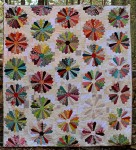I'm rather glad that Christmas is over. It isn't so much the material build up that bothers me but the social expectations that are rammed down your throat by media and advertising. The visions of kids opening their presents, getting excited by meeting Santa.
Having a boy that has a disability makes the Christmas experience very different for us and not one that I am totally at ease with. For his sister, there are the usual gifts and revelry. But for Nicholas, it is just the same day as yesterday and so long as he has water, cookies and iPad he is happy with the world. It is hard to plan a "special Christmas" when there is no excitement in receiving a present; no curiosity, no engagement.
The upside is that there is no arguing over what to wear or what gifts to get. For Nicholas we got him practical gifts.
A cordless hair clipper.
It doesn't sound like much, but the trips to the hair dressers have gotten painful. He doesn't like the sound of the clippers or the sound of the salon. Screams, pinching and biting are normally part of the experience for us as we try and make the experience as painless as possible using iPads and cookies as a hook to get him to cal down. After reading an article on Finding Coopers Voice, we decided to bring the experience home. If we do it often enough he will get used to it. The first time we used the clippers we still had screaming, pinching and biting (broken skin). But at least it wasn't in front of a salon full of people wanting "me time" by getting their hair done.
Social Stories, I hear you yell out! Nicholas isn't cognitively strong, so social stories don't have the impact that you would hope for. Believe me we have tried many strategies; we know our son and how he reacts to things.
So I am glad that Christmas is over and done with and that we didn't over buy for Nicholas things that he wouldn't play with or destroy.



























































































